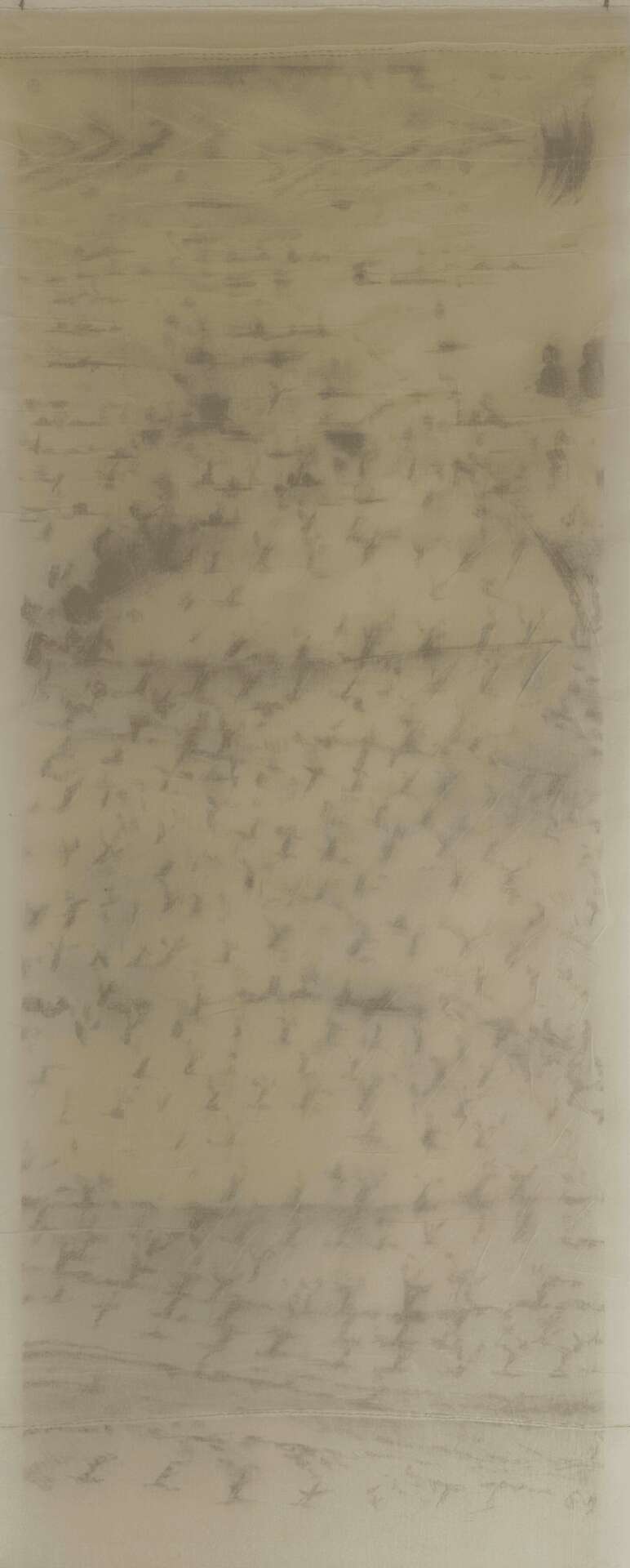We caught up with the brilliant and insightful Lindsey Creel Cherry a few weeks ago and have shared our conversation below.
Lindsey, thanks for joining us, excited to have you contributing your stories and insights. Learning the craft is often a unique journey from every creative – we’d love to hear about your journey and if knowing what you know now, you would have done anything differently to speed up the learning process.
My work is a culmination of the skills I have pieced together throughout my life. I began drawing in college as I was too timid to take art in high school. While I drew throughout my design career, it was generally to achieve a technical goal, and rarely for purely creative purposes. It wasn’t until a pivot in my career, brought on by the great teacher Covid-19, that I began exploring the creative potential of dry media. I have always had an almost delusional sense of “I can do that”, so trying new things has rarely been an issue for me. This “can do/why not” attitude has gotten me farther than I would have expected, both in creative projects and my career. However, I do get it my own way at times. I sometimes overanalyze my work too early- before it has time to develop. No matter your craft, there is a bracket of time between planning and product that simply cannot be criticized. It is the time where the goods are half in your mind and half on the page. I find that when I second guess myself in this space, I crush the momentum. The goal is to find the balance of drive and patience which can be complex at times.

Lindsey, love having you share your insights with us. Before we ask you more questions, maybe you can take a moment to introduce yourself to our readers who might have missed our earlier conversations?
I am a maker and a drawing professor, based out of East Texas. After a decade in apparel design under the brand M.E. Shirley, I shifted to the fine art realm a few years ago. It seems like standard practice to separate art and design, but I don’t believe this divide is as deep as it is promoted to be. Creative problem solving is the common element that retains my attention.
My artwork investigates the tension between perceived control and reality, and the line between art and artifact. I am an avid gardener, and I explore artistic content through the documentation and distortion of plant life around my farm. Often my works on paper include an organic element like charcoal or natural pigments from plants I grow in my ¼ acre garden. However, am not exclusive to homegrown media. The drawings I create run parallel to what is happening seasonally on the farm, and I take great pride in literally growing the content I am putting on paper.

Learning and unlearning are both critical parts of growth – can you share a story of a time when you had to unlearn a lesson?
I’ve spent my adult life unlearning that perfectionism can be pretty boring as an outcome. Growing up it was easy to judge what was “your best.” Striving to be better, or to be perceived as great, is innate in peer settings. My tussle with perfection has always been skill based, subconsciously desiring to prove my worth by the “quality” of my output. Artistic content doesn’t always call for high skill levels, and often overworking an idea leads to a well-polished one that no one, even its maker, cares much about.

What’s the most rewarding aspect of being a creative in your experience?
The most rewarding aspect of being a creative is making. Outcomes are great-they are the proof that process happened. But, the process itself with its ever ending head scratching and problem solving is what I find fulfilling. Whether it is a drawing, installation, garden bed, or shower pan, making something excellent, especially something that previously didn’t exist, and learning in the process, is second to none.
Contact Info:
- Website: https://lindseycreelcherry.com
- Instagram: @lindseycreelcherry



